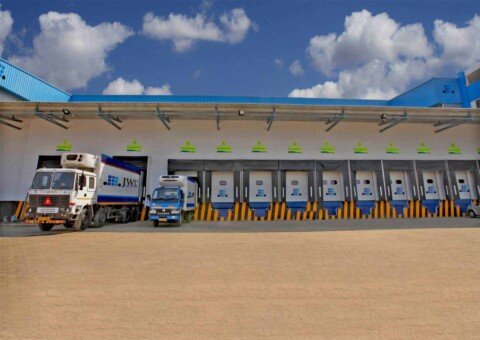Redistribution challenges, absence of retailers to put your brand on the ground and generating a solid online presence backed with revenue growth without compromising on profitability have resulted in few success stories of the D2C model. Nevertheless, the unprecedented corona crisis has led to a new wave of enthusiasm and optimism for the current and upcoming D2C facilitators.
Upamanyu Borah
By 2025, India’s Direct-to-consumer (D2C) segment is going to become a whopping US$100 billion market, as per a report by Avendus Capital.
Buoyed by this growth, D2C brands will be driving the next big wave in the ecommerce industry in India, which will be supported by technological advancements and growth in online spending at a CAGR of 35 per cent.
The e-commerce industry is buzzing with change in the post-COVID-19 world, largely due to the game-changing behaviour of new-age consumers who have got more disposable income to spare. But all of this arose out of the new world order that the multiple lockdowns brought upon all of us.
Today, speed is the primary contributing factor to customer satisfaction with delivery, as customers are willing to pay extra for faster delivery. This is in addition to factors like contactless doorstep delivery, choice of payment options, and ease of exchange/return. Fulfilling these criteria with a captive logistics arm entails a major CapEx investment that could hinder growth and expansion for online retail.
D2C brands are moving closer to the consumer, partnering with 3PL warehousing and delivery partners leading to a better delivery experience.
Shiprocket, India’s leading tech-enabled D2C aggregator in its report, which compiled various trends observed by the brand from January to December 2020 including the year-on-year growth of D2C merchants, shipment volumes, etc. identified a 214 per cent increase in D2C sellers on its platform and a 107 per cent upsurge in the volume of shipments vis-à-vis last year. With multiple drivers of growth in various segments, Shiprocket also noted a 188 per cent surge in online sellers during Q3 of 2020, when compared to Q2 as a majority of people, began shifting from offline to online shopping, owing to the pandemic facilitating soaring usage of the Internet.
Based on the merchant mapping conducted by Shiprocket, with a sample size of over 85,000 sellers, 48 per cent of shippers opted for Cash on Delivery and Express Delivery for their orders during the year.
True to its commitment of helping MSMEs across the country, the fulfilment platform noted that around 51 per cent of the sellers on its platform were from tier-II and tier-III cities and nearly 49 per cent from tier I cities, striking an impressive balance between the metro and non-metro cities in the country.
Shiprocket’s report also observed that online stores such as Shopify, Magento, Woocommerce, etc. contributed to over 32 per cent of the total traction while social media platforms including Facebook, WhatsApp, and Instagram contributed to almost 35 per cent. Moreover, there was considerable traction from offline sellers, who contributed to over 19 per cent, and marketplaces such as eBay, Amazon, Etsy, etc. that comprised over 12 per cent of the total traction.
D2C has been one of the fastest-growing sectors for Shiprocket. “The past year has been phenomenal in terms of the D2C sellers’ on-boarded onto Shiprocket. There was a 200 per cent increase in the number of D2C sellers’ year-on-year with a majority of the D2C orders coming in through social media platforms such as Facebook, WhatsApp, and Instagram,” Saahil Goel, Co-Founder and CEO at Shiprocket mentioned in a recent interaction with us.
“Besides, with several sellers also beginning to avail the services of third-party platforms, as the lockdowns made it nearly impossible for them to move goods from one place to another, inventory distribution has been one of the most exciting innovations in the industry. Shiprocket fulfilment has been dedicated to ensuring timely, frictionless deliveries with a platform to automate Non-Delivery Reasons (NDR) and this has decreased RTO up to 50 per cent.”
“Industry players also adopted automation in supply chain operations which offers huge scope and will facilitate operational efficiency to a large extent. Overall, the untapped market largely lies in bolstering automation in the supply chain and warehouses. The 3PL space offers much scope for growth and development for players who innovate, analyse consumer behaviour, and alter their approaches, and harness technology,” he noted further.
While some D2C brands preferred self-shipping of their products, a majority of them were dependent on advanced logistics partners to send their orders to customers.
Things were not looking up for these sellers because a lot of issues arose with traditional logistics partners. Therefore, they started looking for an ideal shipping partner who would give them a smooth logistics experience and cut down on expenses.
Founded in 2015, end-to-end global trade and logistics management startup Shipsy’s state-of-the-art platform leverages AI, big data, and cloud capabilities to help customers reduce logistics costs, achieve transparency, and ensure timely delivery of goods across different transportation modes. The company presently offers freight procurement, transportation management, logistics management solutions via intelligent modules and centralised dashboard configurations.
“In a world that’s getting increasingly virtualised, logistics is one of those actual physical touchpoints that’s bridging the gap between businesses and customers. Above that, with skyrocketing demands for home/online deliveries of both essential and non-essential goods post-COVID, the supply chain and logistics industry have rapidly transformed into a key business enabler and a revenue generator,” stated Soham Chokshi, Co-founder and CEO, Shipsy Logistics.
“For many young logistics management companies, their mission to expedite the digital transformation goal is gaining rapid momentum resulting in endless possibilities to drive innovation. In other words, the SaaS-based logistics management ecosystem will witness exponential growth in the coming years. It will indeed prove to be a viable investment option for investors across the globe.”
At Shipsy, the success and innovation ratio is just improving. “Most of our plans revolve around resolving current and future business challenges for our customers. To empower businesses to build future-ready logistics operations, we have worked round the clock to enhance our capabilities. For instance, our smart Auto Allocation system now delivers a 94 per cent success rate. We have made our Hub operations tool completely mobile. We enhanced our AI engine to optimise delivery routes literally in real-time. This has helped our customers reduce the distance travelled by 5 per cent and increase average trips by 6 per cent.”
“Our latest deployment of gamification tools is assisting businesses to boost delivery productivity and driver performance.”
Chokshi added, “Completely automating logistics partner selection based on multiple factors, rate negotiations, and deploying Blockchain technology to make financial transactions safer and traceable are other areas we are focussing on.”
“Making deliveries eco-friendly, helping businesses manages unprecedented demand-supply gaps, and empowering brands to use ‘customer experience’ as a well-defined revenue stream, pose great opportunities for us. We also foresee tremendous potential in the D2C segment,” he further added.
The Inside Edge
With as much homogeneity in product and UI/UX across online retail platforms, there are few things that act as differentiators for the customer. Delivery experience leads the pack and it is something which has evolved—right from the brand or platform communicating at regular intervals about the order being shipped, to providing the customer visibility as the shipment moves through the delivery network making its way to the customer.
The super-digitalisation generated by the COVID-19 crisis will affect many who don’t accelerate their efforts in D2C, Online-to-Offline or other channel transformation solutions in the face of new consumer habits. The data by Scalefast on Consumer Behavior below is a testimony to the fact that the D2C model is only going to expand in the near future.
- 61% of consumers would be willing to share more information with brands if it would allow them to have a better shopping experience.
- 54% of consumers expect to receive a personalised discount within 24 hours of the first contact with the brand.
- 51% of consumers see it as vital to receive a personalised experience through the brand’s various digital channels.
- 26% of consumers believe that improved security and user experience on the payment gateway facilitates their consumption at D2C.
- For at least 22% of consumers, having the option of same-day-delivery becomes an important purchase decision.
Now, the question is what actually lies ahead?
The new generations will play a fundamental role in the growth of D2C. Gen Z and Gen Y are more environmentally aware than ever, and are looking to commit to brands that are not only greener and more sustainable, but also demonstrably socially aware (and contributing, of course).
Brands that position themselves with transparency throughout their business strategy (production, supply chain, supplier relations, etc.) will in the long term capitalise on trust and credibility with much greater probability. D2C allows companies to have total control over these factors, and at the same time a greater capacity to prolong this positioning without friction throughout its journey.
So, brands take note, the D2C model is here to stay!
And as Kunal Bahl, CEO & Co-founder of Snapdeal had once rightly said, “Pretty much every brand that I’ve seen succeed in an enduring manner in the D2C space had a very strong instinct around an unmet customer need or a friction point for consumers.”
And importantly, it’s not just the speed of delivery that brands are looking at for growth. They are transforming in three ways: trend-spotting and developing products faster, getting their products to the consumer faster, and marketing through pay-per-click instead of advertising alone.







